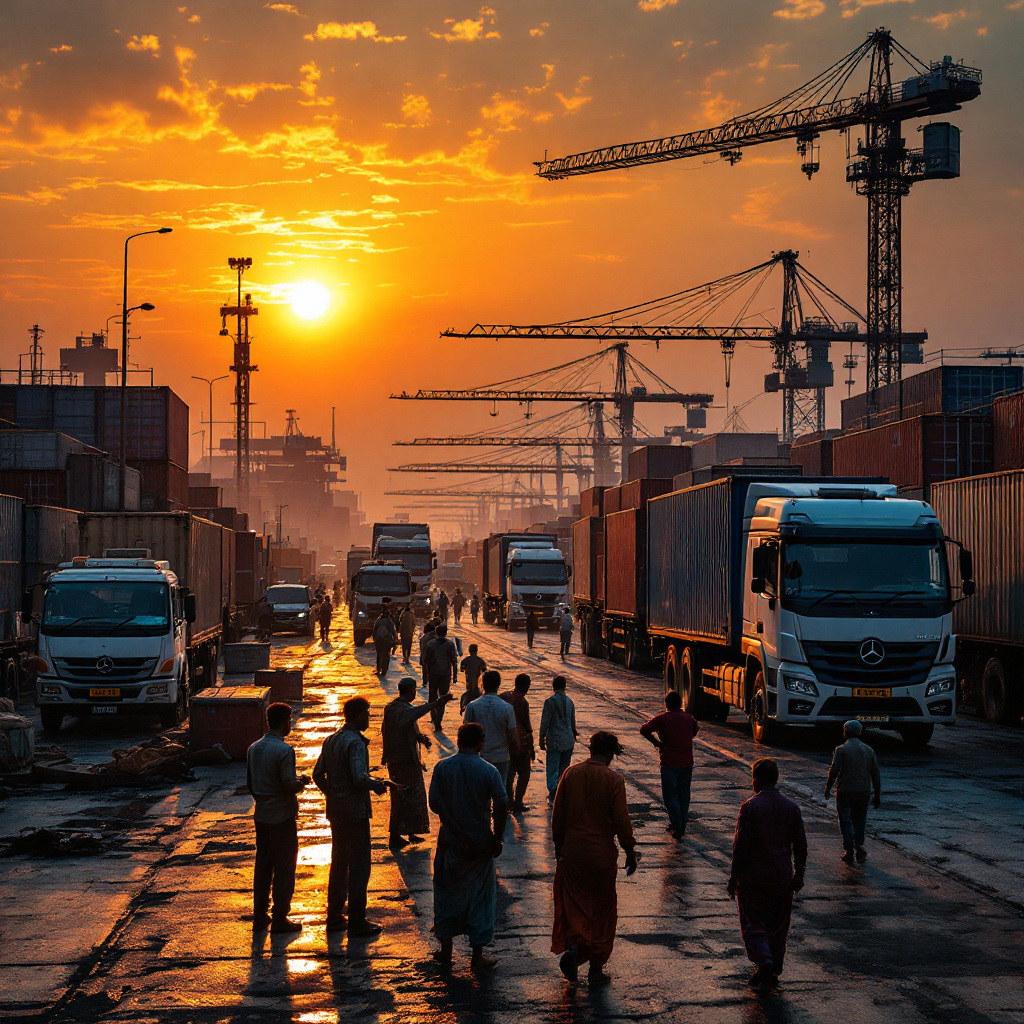はじめに
世界で最も急成長している経済国のひとつであるインドは、物流革命を目の当たりにしている。その広大な地理と多様な地形により、同国では、物流革命が起きている。 輸送 ネットワークは、農村部と都市部を結びつけ、貿易を促進し、経済成長を支える上で極めて重要な役割を果たしている。インドは長年にわたり、ロジスティクス・インフラの整備で大きな進歩を遂げてきた。さらに、先進技術を統合し、歴史的な課題にも取り組んでいる。本稿では、インドの輸送ネットワークがどのように進化し、現代の需要に応えているかを探る。
インドの物流事情の主な特徴
1. 多様な交通手段
インドの物流部門は、以下のようなマルチモーダル輸送システムに依存している:
- 道路:インドの物流の基幹であり、地方と大都市を結ぶ道路は600万kmを超える。
- 鉄道:世界最大級の鉄道網で、石炭、鉄鋼、農産物などのバルク貨物の輸送に欠かせない。
- 港湾:インドの広大な海岸線には、ムンバイ、チェンナイ、ヴィシャカパトナムなどの主要港があり、国際貿易を促進している。
- 航空貨物:デリーやハイデラバードのような成長中の航空貨物ハブは、一刻を争う貨物輸送に欠かせない。
- 内陸水路:ガンガーやブラマプトラといった河川は、環境に優しい物流のための代替輸送路として開発されている。
2. 急速な都市化
インドの都市人口は急速に拡大しており、都市や新興都市の消費者ニーズを満たす効率的な交通網の需要が高まっている。
3. Eコマース・ブーム
eコマース・プラットフォームの台頭は、ロジスティクスの展望を一変させた。その結果、ラストワンマイルの配送と倉庫の最適化がより重視されるようになった。
インドの物流セクターの課題
進歩はしているものの、インドの物流部門はいくつかのハードルに直面している:
1. インフラ格差
多額の投資が行われてきたとはいえ、農村部の道路事情や都市部の交通渋滞は依然として課題である。さらに、多くの物流拠点には近代的な施設がない。
2. 規制のボトルネック
複雑な規制、異なる州法、文書化要件は、地域間の商品の移動を遅らせる。そのため、企業は非効率に直面する。
3. 高いコスト
インドのロジスティクス・コストは、輸送、倉庫管理、燃料価格の非効率性により、世界標準に比べて高い。これは事業予算に直接影響する。
4. 技術的採用
一部の大手企業は先進的なテクノロジーを導入しているが、多くの中小企業(SME)は依然として伝統的な手法に頼っている。その結果、効率の向上は限られている。
インドのロジスティクス進化を牽引するイノベーション
1. インフラ開発
政府は交通網を近代化するため、以下のような野心的なプロジェクトを立ち上げた:
- バラットマラ・プロジェクト:道路接続を改善するために高速道路を拡張する。
- 貨物専用通路(DFC):貨物輸送のために設計された高速鉄道回廊で、輸送時間とコストを削減する。
- サガルマラ・イニシアティブ:海上貿易を促進するための港湾と沿岸インフラの開発。
2. デジタルトランスフォーメーション
テクノロジーはインドの物流に革命をもたらしている。例えば
- GPSとIoT:リアルタイムトラッキングシステムは、視認性と車両管理を向上させます。
- オートメーション:スマート倉庫と自動仕分けシステムは業務効率を高める。
- 電子手形:物品・サービス税(GST)制度に基づく合理化された文書化プロセスは、州をまたがる物品の移動を簡素化する。
3. 持続可能な実践
インドは環境への影響を軽減するため、環境に優しい物流ソリューションを採用している。その例として以下が挙げられる:
- ラスト・マイル・デリバリーのための電気自動車の普及。
- 生鮮食品用の太陽電池式低温貯蔵装置の使用。
- 二酸化炭素排出量を削減するため、内陸水路の利用を拡大する。
インドの物流地域別ハイライト
1. 北インド
パンジャブ州、ハリヤナ州、ウッタル・プラデーシュ州などの産業拠点は、道路や鉄道の接続がしっかりしているため、恩恵を受けることができる。そのため、農産物や工業製品の効率的な移動が可能となっている。
2. 西インド
マハラシュトラ州とグジャラート州の港は、輸出入の重要なゲートウェイである。さらに、これらの港湾は道路網や鉄道網によって支えられている。
3. 南インド
ベンガルール、チェンナイ、ハイデラバードといった都市は、IT・電子商取引産業の物流拠点となっている。さらに、これらの都市は増大する需要に対応するため、航空貨物輸送能力を拡大している。
4. 東インド
内陸水路と鉄道は、地域を主要な貿易回廊につなぐ重要な役割を果たしている。その結果、こうした取り組みが産業の成長を促進している。
インド物流の将来動向
- 複合輸送の拡大
- 貨物輸送を最適化するため、道路、鉄道、航空、水路の統合を強化する。
- AIとビッグデータの導入
- 需要予測とルート最適化のための予測分析。
- 3PLと4PLサービスの成長
- 物流管理を専門業者に委託し、効率化を図る。
- 技能開発に注力
- 近代的なロジスティクス業務のための熟練労働力を構築するための訓練プログラム。
結論
インドのロジスティクス・セクターは、インフラのアップグレード、技術の進歩、政策改革に牽引され、変革の道を歩んでいる。課題は山積しているが、イノベーションと持続可能性への取り組みにより、インドは世界の物流大国として位置づけられている。多様な輸送網を活用し、近代的な手法を取り入れることで、インドはロジスティクスの展望を再定義しようとしている。その結果、経済成長を支え、世界貿易のつながりを強化することになるだろう。

 インドの物流:輸送ネットワークはどのように進化しているか">
インドの物流:輸送ネットワークはどのように進化しているか">
